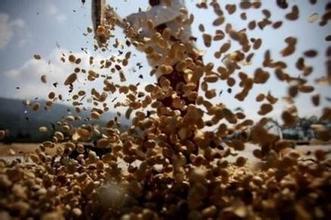Colombian Coffee introduces the origin of Colombian coffee

Coffee was first introduced to Colombia in 1808 when it was brought by a priest from the French Antilles via Venezuela. Today the country is the second largest producer after Brazil.
Coffee producing areas in Colombia:
Colombian coffee is one of the few original coffee sold in the world under the name of the country. In terms of quality, it has won praise unmatched by other coffee. The country is the world's largest exporter of Arabica coffee beans, while Robbins coffee is rarely grown. It is also the world's largest exporter of washed coffee beans (Washedbeans). Compared with other producing countries, Colombia is more concerned with developing products and promoting production. It is this, coupled with its superior geographical and climatic conditions, that makes Colombian coffee excellent in quality and delicious and famous all over the world.
The country's coffee-producing areas are located in the foothills of the Andes, where the climate is mild and the air is humid. Colombia has three Cordilleras mountains (sub-mountain system) running north and south, right into the Andes. Coffee is grown along the highlands of these mountains. The mountain steps provide a diverse climate, which means that the whole year is the harvest season, with different kinds of coffee ripening at different times. There are about 2.7 billion coffee trees in Colombia, 66 per cent of which are planted in modern plantations and the rest on small, traditionally run farms.
The main production areas of Colombia are in the central and eastern mountains. The most important plantations along the central mountains are located in Medellin, Armenia and Manizales, where coffee is of the best quality and high price, characterized by full grains, rich nutrients, rich aromas and moderate acidity. Taken together, the three regions are referred to as MAM (the initials of the major cities in the three regions). Most of Colombia's top coffee for export comes from MAM. Along the eastern mountains, the two best areas are around Bogota and then north around Bucaramanga. Bogota coffee is less acidic than Medellin coffee, but the two are of the same quality.
The thorny question facing Colombian coffee growers is whether to replace bourbon coffee trees with fast-growing and high-yielding Arabica coffee trees. Some people say that the quality will not be as good as it used to be, but others say that in the place where coffee is most suitable for growth, there will not be much difference in quality.
The characteristics of Colombian coffee:
Coffee grades are divided into Supremo, Excelso and UGQ,UnusualGoodQuality. Klauss coffee in the excellent grade is exported to Germany and Europa coffee is exported to Nordic countries. Excellent grade coffee and top coffee can be bought in most coffee shops. The difference between the two professional regulations is that the coffee beans used in top coffee are larger, and the raw materials are taken from newly harvested coffee beans, so it is easier to ensure the quality of the products. Excellent coffee is usually softer and slightly more acidic than top coffee, but both are aromatic coffee with moderate granules and excellent fruit. Colombian coffee is often described as having a silky taste. Of all the coffees, it has the best balance. It tastes soft, smooth and ready to drink.
Flavor: nutritious, highly balanced, sometimes nutty
Suggested baking method: moderate to deep baking, suitable for various uses
★★★: excellent
Colombian coffee market:
Colombia established the National Coffee Management Association (FederacionNacionaldeCafeteros, or FNC) in 1927, which is responsible for quality supervision. Although the association is a private company, it acts on behalf of the government. The National Coffee Management Association is also responsible for health care, education, road construction, hiring planting technicians, conducting investigations, monitoring product quality, directly handling 50 per cent of total exports, and employing marketing personnel. Like Kenya's National Coffee Management Association, it is a model of coffee organization.
Colombian coffee farmers can sell all their products to the Coffee Management Association at an official low price, or to exporters, who may offer a higher price or no bid at all. In fact, the Coffee Management Association (FNC) controls exports to Europe, while coffee to the United States is mainly exported through private exporters. However, all exports are subject to the lowest export price. Colombia is fortunate to have Atlantic and Pacific ports, which helps to reduce the cost of transporting coffee, which is the only country in South America.
Important Notice :
前街咖啡 FrontStreet Coffee has moved to new addredd:
FrontStreet Coffee Address: 315,Donghua East Road,GuangZhou
Tel:020 38364473
- Prev

Boutique coffee cup knowledge cup size common sense
Cup size Many times, the size of the coffee cup can be used to roughly judge the strength of a cup of coffee. The size of the coffee cup is generally divided into three types: * Small coffee cups below 100CC-mostly used to hold strong hot Italian or single coffee, such as Espresso only about 50CC, although almost one bite can be drunk, but lingering mellow aftertaste, and seems to be
- Next

Coffee producing area in Ethiopia details Ethiopian coffee
The coffee tree originated in Ethiopia, which was originally a wild plant here, and the name coffee comes from the Ethiopian town of Kaffa. Humans may have known how to grow coffee trees as early as the 9th century. Coffee producing area in Ethiopia: many coffee trees in Ethiopia are still wild plants, and the coffee grown on this coffee tree is full of grains.
Related
- Beginners will see the "Coffee pull flower" guide!
- What is the difference between ice blog purified milk and ordinary milk coffee?
- Why is the Philippines the largest producer of crops in Liberia?
- For coffee extraction, should the fine powder be retained?
- How does extracted espresso fill pressed powder? How much strength does it take to press the powder?
- How to make jasmine cold extract coffee? Is the jasmine + latte good?
- Will this little toy really make the coffee taste better? How does Lily Drip affect coffee extraction?
- Will the action of slapping the filter cup also affect coffee extraction?
- What's the difference between powder-to-water ratio and powder-to-liquid ratio?
- What is the Ethiopian local species? What does it have to do with Heirloom native species?

